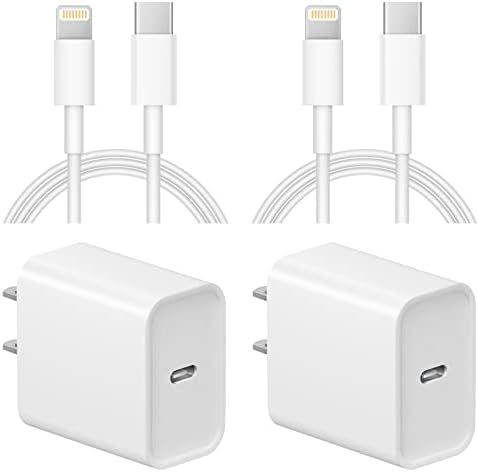
One of the least favorite teams during the 2021 regular season, the San Diego Chargers were also one of the most bizarre and most exciting teams to watch in the NFL regular season. There are a lot of interesting facts and opinions about the team, some good and some bad, but there are also some facts that just don’t square with the opinion. So, what is it that people do not see when they look at the Chargers? Find out below!
Chargers and batteries are rated according to their efficiency by their manufacturers. For example, the highest rating is 5 volts, which means the battery charger has the ability to provide the most power to move the smallest amount of weight. In contrast, the lowest rating is zero volts, which means that the charger provides less power to the batteries and will result in lower performance. The Chargers are also rated in several different ways; the most common being a battery’s degree of deep discharge, which indicates how long a battery can be fully discharged before it becomes completely discharged.
Another way to rate a battery charger’s efficiency is the battery charger’s temperature resistance, which measures the resistance of the temperature to heat. Most Chargers will be quite efficient in regards to both of these factors, so if you buy a charger that is rated high on the TDR scale, you should expect your batteries to charge very deeply. The batteries that have a lower temperature resistance will stay much cooler until the time they are fully charged. Keep this in mind if you plan on purchasing many batteries, as battery chargers with a high temperature resistance may overheat the batteries, resulting in poor charging performance.
A third key element to battery charging efficiency is the amount of energy that a battery can retain before it becomes totally discharged. This is called the maximum charge rating of a battery and can vary depending on a number of factors. For example, the chemical composition of a battery will affect how much energy a battery can retain. If you don’t want to drain your battery to the fullest, make sure that you purchase a properly sized and rated battery charger.
There are four types of battery chargers that can be used in rapid recharge applications; fast cycle, trickle charge, direct vent, and dual mode. The first two types of chargers work by allowing the battery to be charged very rapidly, often within less than one minute. The last two types of chargers, the dual mode chargers, work in a similar fashion to the fast cycle, but allow the battery to be charged even further, up to a level of approximately four hours. These chargers should only be used in electrical applications where quick charging is required and are not recommended for use with lead acid, lithium ion, or cyclic applications. If you do purchase a fast cycle or trickle charger for rapid recharge, you should be very careful to avoid mishaps that could damage the battery.
Rapid rechargeable batteries are a great way to add power quickly, but it is important that you pay attention to safety when charging these kinds of batteries. Rapid chargers can cause severe damage to a battery, or even cause the battery to explode in your hand. Make sure that you purchase a charger that is designed specifically for the batteries that you are using, as well as one that is compatible with the battery that you are going to use.
-
![iPhone Quick Charger, [Apple MFi Certified] 20W PD USB C Wall Charger Block Plug with 10FT Further Lengthy Kind C to Lightning Quick Charging Information Sync Cable for iPhone 13 12 11 XS XR X 8 iPad and Extra](https://m.media-amazon.com/images/I/31dW3UPEEeL._AC_.jpg) iPhone Quick Charger, [Apple MFi Certified] 20W PD USB C Wall Charger Block Plug with 10FT Further Lengthy Kind C to Lightning Quick Charging Information Sync Cable for iPhone 13 12 11 XS XR X 8 iPad and Extra$14.99
iPhone Quick Charger, [Apple MFi Certified] 20W PD USB C Wall Charger Block Plug with 10FT Further Lengthy Kind C to Lightning Quick Charging Information Sync Cable for iPhone 13 12 11 XS XR X 8 iPad and Extra$14.99 -
 Samsung 45W USB-C Tremendous Quick Charging Wall Charger for Samsung Galaxy S22 S21 S20 Extremely Plus Be aware 10+ Charger Adapter Block$17.99
Samsung 45W USB-C Tremendous Quick Charging Wall Charger for Samsung Galaxy S22 S21 S20 Extremely Plus Be aware 10+ Charger Adapter Block$17.99 -
![[MFi Certified],USB C Wall Charger, 2PACK USB Kind C Charger Block 20W PD Quick Charging Energy Adapter Suitable with iPhone 13 12 11 Professional Max XSMAX XR XS X, iPad Professional 2020, Google Pixel 4XL/4/3XL](https://m.media-amazon.com/images/I/21fS8rC3rTL._AC_.jpg) [MFi Certified],USB C Wall Charger, 2PACK USB Kind C Charger Block 20W PD Quick Charging Energy Adapter Suitable with iPhone 13 12 11 Professional Max XSMAX XR XS X, iPad Professional 2020, Google Pixel 4XL/4/3XL$13.99
[MFi Certified],USB C Wall Charger, 2PACK USB Kind C Charger Block 20W PD Quick Charging Energy Adapter Suitable with iPhone 13 12 11 Professional Max XSMAX XR XS X, iPad Professional 2020, Google Pixel 4XL/4/3XL$13.99 -
![iPhone Charger, [Apple MFi Certified] Quick iPhone Charger 2PACK 6FT Lightning Cable Wire Quick Charging Twin 2 Port Plug USB Wall Charger Appropriate with iPhone 13 12 11 Professional Max XS XR X 8 Plus 7 6 iPad](https://m.media-amazon.com/images/I/41Kv3UdkXGL.jpg) iPhone Charger, [Apple MFi Certified] Quick iPhone Charger 2PACK 6FT Lightning Cable Wire Quick Charging Twin 2 Port Plug USB Wall Charger Appropriate with iPhone 13 12 11 Professional Max XS XR X 8 Plus 7 6 iPadProduct on sale$12.73
iPhone Charger, [Apple MFi Certified] Quick iPhone Charger 2PACK 6FT Lightning Cable Wire Quick Charging Twin 2 Port Plug USB Wall Charger Appropriate with iPhone 13 12 11 Professional Max XS XR X 8 Plus 7 6 iPadProduct on sale$12.73 -
 iPhone Charger Quick Charging,【Apple MFi Licensed】USB C Wall Charger Quick Charging 20W PD Adapter with 6FT Lightning Cable Appropriate iPhone 13/13 Professional Max/13 Professional/12/12 mini/12 Professional Max/11/11Pro/XS/X/XR$21.80
iPhone Charger Quick Charging,【Apple MFi Licensed】USB C Wall Charger Quick Charging 20W PD Adapter with 6FT Lightning Cable Appropriate iPhone 13/13 Professional Max/13 Professional/12/12 mini/12 Professional Max/11/11Pro/XS/X/XR$21.80 -
 Tremendous Quick Charger Sort C Package, VELOGK 25W PD PPS USB C Wall/Automobile Charger for Samsung Galaxy S22/S21/S20/Plus/Extremely/FE/Be aware 20/10/A71,2020/2018 iPad Professional/Air,with 2X Nylon-Braided USB C-to-C Cable(6.6ft)Product on sale$20.99
Tremendous Quick Charger Sort C Package, VELOGK 25W PD PPS USB C Wall/Automobile Charger for Samsung Galaxy S22/S21/S20/Plus/Extremely/FE/Be aware 20/10/A71,2020/2018 iPad Professional/Air,with 2X Nylon-Braided USB C-to-C Cable(6.6ft)Product on sale$20.99 -
 USB C to Lightning Cable 3ft 2Pack, Energy Supply USB C iPhone Cable MFi Licensed Braided Sort C iPhone Charger Wire Quick Charging Suitable with iPhone 11 12 Professional Max X XS XR 8 7 6s Plus SE, iPadProduct on sale$8.99
USB C to Lightning Cable 3ft 2Pack, Energy Supply USB C iPhone Cable MFi Licensed Braided Sort C iPhone Charger Wire Quick Charging Suitable with iPhone 11 12 Professional Max X XS XR 8 7 6s Plus SE, iPadProduct on sale$8.99 -
![iPhone 13 12 Quick Charger [Apple MFi Certified] 20W USB C Wall Charger with 10Ft USB-C to Lightning Cable Suitable with iPhone 13/13 Mini/13 Professional/13 Professional Max/12/12 Professional/12 Professional Max/11/Xs Max/XR/X/iPad](https://m.media-amazon.com/images/I/41fi1IBZ2aL._AC_.jpg) iPhone 13 12 Quick Charger [Apple MFi Certified] 20W USB C Wall Charger with 10Ft USB-C to Lightning Cable Suitable with iPhone 13/13 Mini/13 Professional/13 Professional Max/12/12 Professional/12 Professional Max/11/Xs Max/XR/X/iPadProduct on sale$12.99
iPhone 13 12 Quick Charger [Apple MFi Certified] 20W USB C Wall Charger with 10Ft USB-C to Lightning Cable Suitable with iPhone 13/13 Mini/13 Professional/13 Professional Max/12/12 Professional/12 Professional Max/11/Xs Max/XR/X/iPadProduct on sale$12.99 -
 Criacr 3 in 1 Foldable Wi-fi Charger, Magnetic Quick Wi-fi Charging Pad, Appropriate with iPhone 13/12/SE/11, Samsung Galaxy, Apple Watch, AirPods ProfessionalProduct on sale$34.99
Criacr 3 in 1 Foldable Wi-fi Charger, Magnetic Quick Wi-fi Charging Pad, Appropriate with iPhone 13/12/SE/11, Samsung Galaxy, Apple Watch, AirPods ProfessionalProduct on sale$34.99







